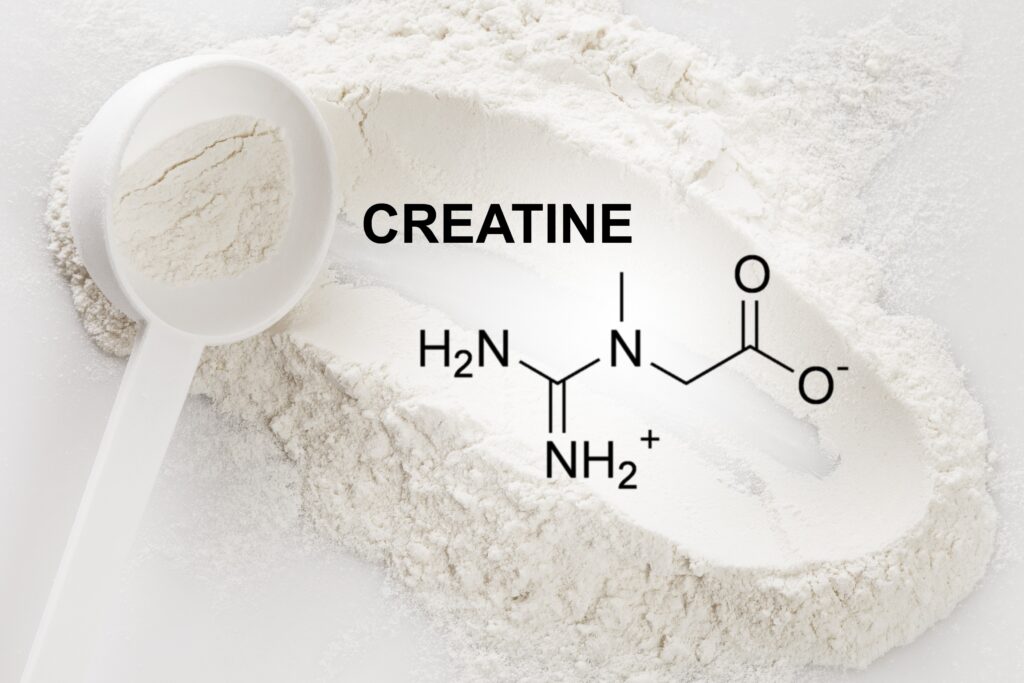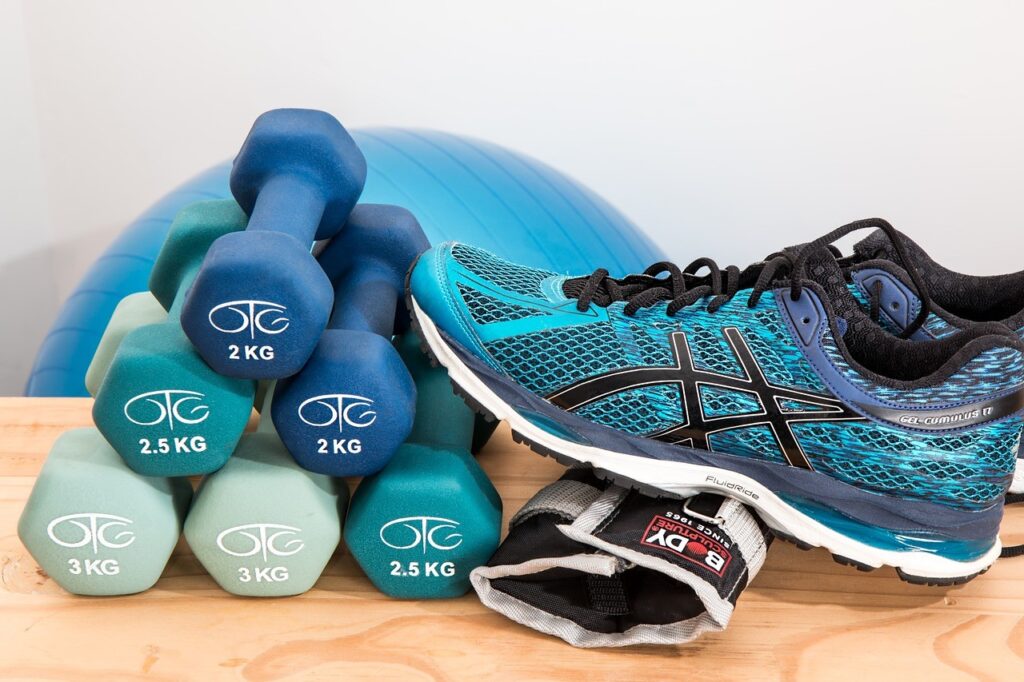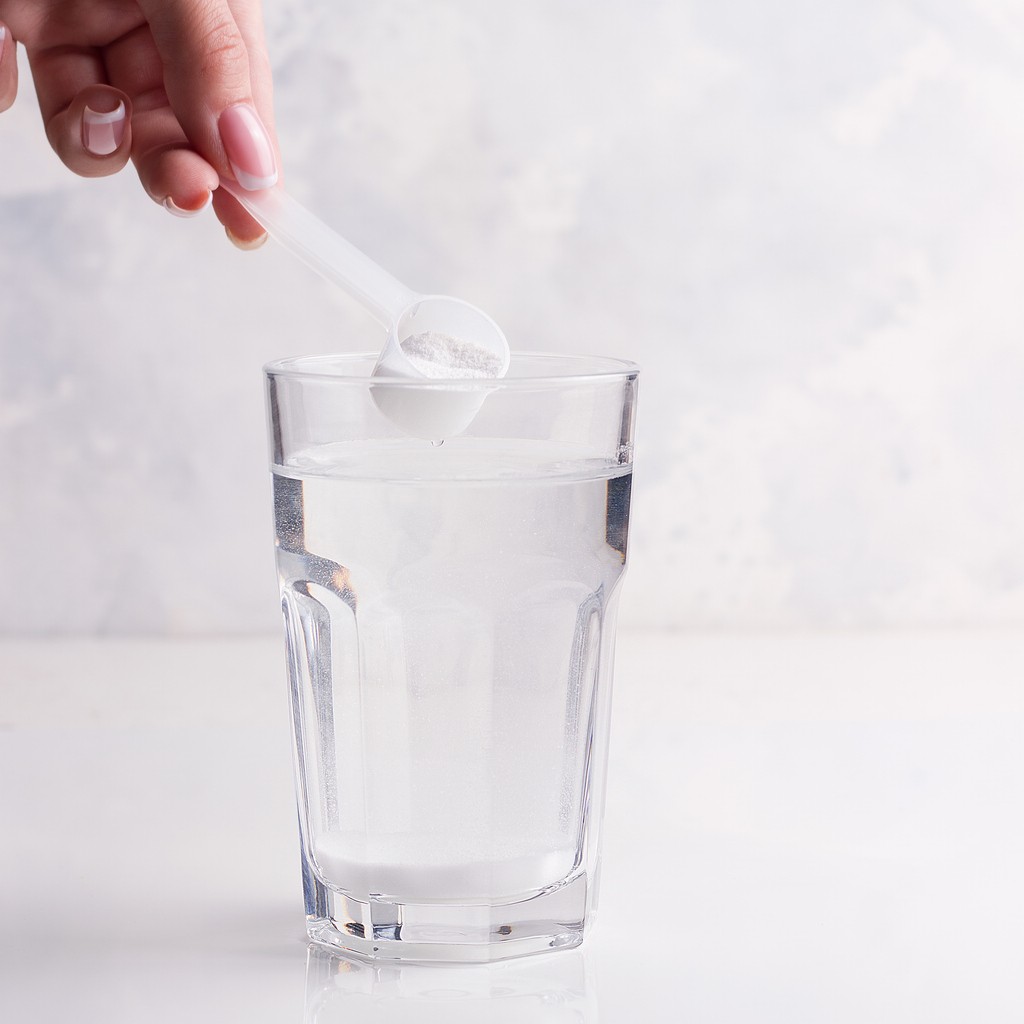blog
August 20, 2025
Creatine for Menopause: How It Helps Midlife Women
Curious about creatine for menopause?
Learn how it may support muscle, bone, and brain health in midlife women — based on real science.
Menopause and the Hidden Changes in Muscle, Bone, and Brain Health
Menopause isn’t only about hot flushes or night sweats — it’s also a stage of life that can quietly affect muscle, bone, and brain health. As researchers look for effective strategies to support women through this transition, creatine for menopause has emerged as a supplement worth attention. Once known mainly in the sports world, creatine is now being studied for its potential to help midlife women stay stronger, steadier, and sharper as they age.
From our early 40s onwards, we naturally start to lose lean body mass (muscle and bone). This slow, silent decline can chip away at our strength, energy, and even our metabolism.
After the age of 50 this process often speeds up — with around 1–2% loss of lean body mass each year. At the same time, body fat can shift toward the middle, raising the risk of insulin resistance, type 2 diabetes, and heart health changes.
Bone density takes a hit too. Falling oestrogen speeds up bone breakdown, weakens bone strength, increasing the risk of osteoporosis. Brain health is also affected, with many women noticing changes in memory, focus, or increased menopause brain fog.
And if we’re trying to lose weight, cutting calories without the right strategies can mean losing muscle along with fat — making it even harder to achieve the body composition changes we want.
The good news? We can take steps to slow down muscle and bone loss and protect our health. Eating enough protein and doing regular resistance training are the foundations which help preserve strength, metabolism, and independence well into later life.
But protein and resistance training aren’t the only tools we have.
Creatine Stands Out From Other Menopause Supplements
Among the many supplements marketed for menopause, very few are backed by solid science.
Creatine is different. It’s one of the rare supplements with a strong research base — but it isn’t a magic fix.
Instead, creatine may help amplify the lifestyle changes many of us are already making — like eating well, lifting weights, and staying active.
What makes creatine even more interesting is that, while it’s long been used in the sports world, research is now exploring its potential benefits for women in perimenopause and post menopause.

Creatine and Women’s Health in Midlife
Research into creatine in women during perimenopause and post menopause is still developing.
What we do know is:
- The strongest evidence supports creatine’s role in muscle health.
- Early studies suggest possible benefits for bone health and brain function, but these areas need much more research.
- Importantly, creatine has decades of safety data from the sports world, which sets it apart from many menopause supplements that lack proven safety or efficacy.
You might be wondering — what exactly is creatine, and how does it help women in midlife?
What is Creatine?
Creatine is often sold alongside sports supplements, but don’t mistake it for protein powder. Although it’s made up of amino acids, it doesn’t build proteins or muscle directly.
Instead, creatine helps cells produce more ATP — the body’s main energy currency. More ATP means our cells (and therefore we) can function more efficiently.
About 95% of the body’s creatine is stored in muscle, acting as a quick-access energy reserve. The remaining 5% is found in organs such as the brain, where energy support is equally vital.
Our bodies can make some creatine (about 1 g per day), and we also get it through food — mainly meat and fish. A typical non-vegetarian diet provides around 1g daily, but research shows this isn’t enough to fully saturate muscles.
When taken as a supplement, muscles absorb creatine first. Once those stores are full, extra creatine becomes available for other organs — including the brain.
How Creatine Supports Muscle Health in Women
Of all areas studied, muscle health has the strongest evidence for creatine.
- When taken at 3–5 g per day (or 0.1g per kg) for around a month, creatine helps increase muscle strength and endurance, especially when combined with resistance training.
- On its own, creatine may offer small improvements, but its real effectiveness comes as an amplifier of strength training.
- For women, this often means modest but meaningful changes in body composition — on average around 0.6 kg of additional muscle with creatine supplementation compared to without, although responses vary.
- Creatine may also reduce post-exercise soreness and improve recovery by lowering inflammation and cellular stress.
Creatine is now being explored as a countermeasure to menopause-related declines in muscle and strength. Falling oestrogen accelerates muscle breakdown, but creatine may help buffer these changes by supporting healthier muscle metabolism.
Creatine and Muscle Health: What We Know So Far
- ✅ Well-researched supplement for muscle strength and performance
- ✅ Amplifies results of resistance training in women
- ✅ Supports recovery and may reduce soreness
- ✅ Typically adds ~0.5–0.6 kg of lean muscle in women
- ⚠️ Limited benefit without exercise
Bottom line: Creatine isn’t a magic fix, but it’s one of the few supplements with solid evidence for its effects; amplifying the muscle benefits of resistance training during perimenopause and post menopause.

Creatine and Bone Health During Menopause
Bone health is a major focus during and after menopause. Falling oestrogen accelerates bone loss, raising the risk of osteoporosis.
Research into creatine and bone health is mixed:
- Some studies suggest creatine may stimulate osteoblasts (bone-building cells), reduce inflammation, and indirectly protect bones by strengthening muscles.
- A 2 year study in postmenopausal women found creatine combined with training preserved bone geometry— the shape and structure that makes bones more resilient — even though bone density itself didn’t change.
- Other studies show no consistent benefit on bone physiology
Creatine has also been studied in joint health.
In women with mild-to-moderate osteoarthritis, creatine plus resistance training improved function, lower-body muscle, and quality of life beyond exercise alone. Both groups had less pain, showing exercise’s power — but only creatine improved mobility and strength.
Creatine and Bone & Joint Health: What We Know So Far
- ✅ May support bone strength indirectly via muscle gains
- ✅ Some evidence of improved bone geometry in postmenopausal women
- ✅ Helps women with mild osteoarthritis improve strength and quality of life
- ⚠️ No consistent effect on bone density
Bottom line: Creatine looks like a useful add-on for bone and joint health, but more research in menopausal women is needed.
Creatine and Menopause Brain Fog
Many women experience menopause brain fog — difficulties with memory, focus, and clarity. Could creatine help?
Because creatine supports brain energy, researchers are exploring its role in cognition and mood:
- Sleep deprivation: High-dose creatine (20–30 g/day, ~0.35 g/kg) improved short-term memory, reaction times, and reduced fatigue in sleep-deprived adults.
- Everyday cognition: Evidence is less clear. Standard doses haven’t consistently improved brain function in well-rested adults.
- Mood and depression: A trial found that creatine (5 g/day) improved antidepressant effectiveness in women with depression although more research is needed to really understand creatines role.
Creatine and Brain Health: What We Know So Far
- ✅ Supports brain energy metabolism
- ✅ Improves memory, focus, and reaction times in sleep-deprived adults
- ✅ Early evidence of mood benefits but more information is needed.
- ⚠️ Limited data in perimenopausal and postmenopausal women
Bottom line: Creatine may help especially when sleep is poor, but more targeted studies are needed in midlife women.
How to Take Creatine: A Guide for Women Over 40
- Best type: Creatine monohydrate (most researched, safest, most affordable).
- Quality: Look for third-party tested products for purity.
- Dose: 3–5 g/day (or more specifically 0.1 g per kg).
- Mixing: Dissolves in water or cold fluids — avoid mixing in hot drinks.
- Side effects: Limited at 3–5 g per day. If bloating/cramping occurs take alongside food and/or split doses if taking more than 5g a day.
For improved brain functioning (e.g., after a poor night’s sleep), studies have used 20–30 g/day, but this isn’t yet recommended for everyday use until more evidence emerges.

Creatine FAQs for Women in Midlife
- Is creatine safe for women over 40 or 50?
Yes decades of research show creatine is safe for healthy adults, including older women, at the recommended 3–5 g daily dose. If you have kidney disease or another medical condition, check with your healthcare provider first. - Will creatine make me gain weight?
At the start, creatine increases water stored inside muscle cells — not fat — so you might notice a small rise in weight. This often settles over time and more water inside the cells helps the process of building muscle. - Does creatine increase blood pressure?
No. Studies haven’t shown creatine to raise blood pressure in healthy adults. By improving muscle and metabolic health, creatine may even indirectly support heart health. If you already have high blood pressure, consult your doctor before adding any supplement. - When should I take creatine — before or after exercise?
Timing isn’t critical. The most important thing is to take it consistently every day. Taking creatine close to a workout offers small benefits, but the difference remains limited. If you have a sensitive stomach, try taking it with food. - Which form of creatine is best for women?
Stick to creatine monohydrate. It’s the most researched, effective, and affordable form. Choose products that carry third-party testing for purity. - Do I need to “load” creatine?
No. A steady daily dose of 3–5 g will saturate your muscles within about four weeks. Loading (20 g/day for 5–7 days followed by maintenance dose of 3-5g) speeds up the process but can cause stomach upset. - Is creatine safe for kidneys?
Yes. Many studies and decades of real-world use show no harm to kidney function in healthy adults at standard doses. If you have kidney disease, check with your doctor about creatine supplementation first. - Will creatine cause hair loss?
There’s no strong evidence linking creatine to hair loss. One small study in men started this concern, but no one has replicated it. - Do vegetarians or vegans benefit more from creatine?
Yes, potentially. Vegetarians and vegans usually have lower creatine levels and may see greater benefits from supplementation.
Got more questions? Feel free to get in touch with me directly
Key Takeaways: Creatine for Women in Menopause
Menopause brings changes that can quietly chip away at muscle, bone, and brain health — but creatine offers a safe, affordable, and well-researched option to help midlife women stay stronger, steadier, and sharper.
- Best evidence: supports muscle strength, recovery, and lean mass (with resistance training).
- Promising but mixed results: bone and joint health.
- Early evidence shows creatine may support brain health and mood, especially during sleep deprivation, but researchers need more studies to confirm
- Safe long-term at 3–5 g/day (or 0.1g per kg).
Creatine isn’t a magic fix, but it’s one of the few supplements with a strong research base for women in midlife. Think of it as an amplifier — helping you get more out of the healthy habits you’re already building.
Making changes in midlife doesn’t have to feel overwhelming. If you’d like some personalised support to get clear on what will truly help your habits, health, and weight, take a look at my Work With Me page to see how we can work together.